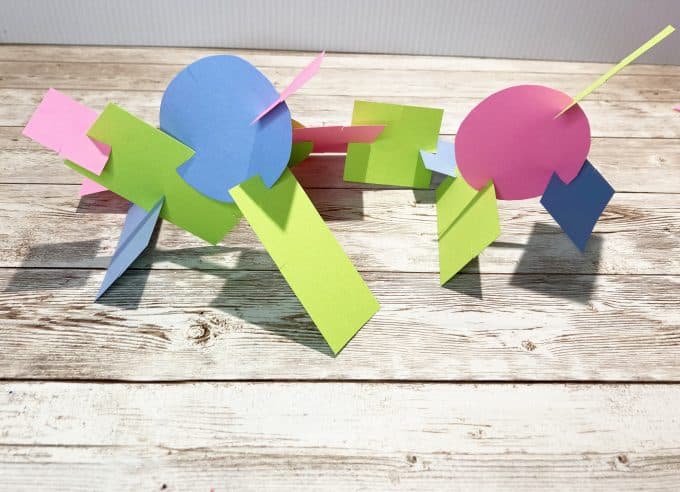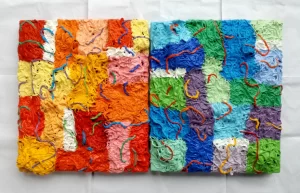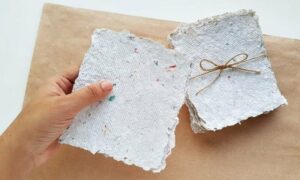It’s amazing how many different ways paper can be used as an art medium, beyond its typical use as a writing or printing surface. With thought and creativity, paper can be transformed into a sculptor’s tool and used to create a variety of complex and interesting three-dimensional objects. We learn about the creative and exciting ideas that artists and craftsmen come up with when sculpting from paper. This will show us the endless possibilities that this simple material offers.
1. The Artistry of Paper Sculpting:
Paper sculptures are a unique way to express yourself as an artist. You can shape and move paper to create three-dimensional structures. People often think of paper as flat, but artists use its flexibility and malleability to create intricate and beautiful works of art. This art form can be used in a variety of styles, from powerful and surreal to delicate and detailed.
2. Making Origami:
Origami, a well-known and respected method of paper shaping, is a Japanese paper folding art that dates back thousands of years. People who are good at origami carefully fold paper into animals, shapes, and geometric patterns. Origami can be both easy and difficult because you have to be very precise when you do it. The sculptures you create are amazing because they are simple and complex at the same time.
3. Calligraphy:
Paper filigree is another name for quilling paper. To create intricate patterns, roll up strips of paper and shape them. The down sculptures show how beautiful even the most basic materials can be, with flowers and patterns that are very small and difficult to see. Artists can use spines to add depth and texture to their works, making the images both beautiful and pleasing to the touch.
4. Paper Machine:
The paper mache method is a method of mixing an adhesive with thin strips of paper that allows you to create larger and stronger sculptures. The artist can shape the paper mache into many different shapes before allowing it to dry and harden. Paper mache is often used to make masks, figures, and even useful things because it has so many uses.
5. Pop-up Artwork:
Pop-up art is a fun and vibrant form of paper sculpture and involves creating scenes that look as if they come out of an open book or card. This paper sculpture is fun and interactive, adding a sense of surprise and story to the art form. To achieve these beautiful results, artists use clever folding and cutting methods.
6. Paper Cut Sculpture:
Artists who specialize in paper-cut sculptures use very sharp knives to cut shapes and patterns from paper. These images often show complicated scenes, patterns, or iconography. Cutouts create an effect of light and shadow, giving the art more depth and dimension, creating a striking piece.
7. Cutting Layered Paper:
For layered decoupage, you can stack multiple cutout sheets on top of each other to add depth and texture to the image. The artists carefully cut away part of each layer to reveal the layers below, so that each layer adds color to the whole. This method allows you to create complex scenes or abstract patterns that change as the viewer looks deeper into the layer.
8. Folded Book Sculpture:
By carefully folding and shaping the pages, the artist transforms old books into unique images. Foldable book sculptures transform books into works of art and give them life. They do this by creating intricate patterns on the spines or three-dimensional images on the pages.
9. Sculptures Made from Collage:
Combining different types of paper into a three-dimensional design is what collage sculpture is all about. Artists can combine clippings from magazines, newspapers, and other printed materials to create visually rich pieces with many different textures. Stacking different pieces of paper together makes the story more interesting and allows you to explore themes and ideas.
10. Mixed Material Paper Sculpture:
Adding other materials to the work is a common way for artists to push the boundaries of standard paper sculpture. For example, mixed media paper sculptures can incorporate found objects, fabrics, and even digital components. This mix of materials opens up more possibilities, allowing artists to play freely with shapes, colors, and textures.
Conclusion
When you sculpt with paper, you can be as creative and innovative as you want. Seemingly ordinary objects can express themselves in surprising ways. From the ancient art of origami to modern mixed-media sculpture studies, paper sculpture is fascinating because it can be used in so many different ways. Artists continue to push the boundaries of this simple yet stunning medium, whether creating delicate origami cranes or sculpting delicate paper mache shapes. So grab some paper, let your brain run wild, and create a world of wonder with the art of paper.
FAQs
1. What is the difference between paper quilling and origami when using paper for modeling?
Origami is the art of folding paper into complex shapes and patterns, usually without cutting. On the other hand, if you use a quill pen, you can roll and shape strips of paper into intricate patterns. More complex patterns and textures can be created using spiral elements.
2. Do you need special skills to make paper sculptures? Or can anyone do it?
Paper sculptures can be completed by people of all levels. Some techniques, such as origami, require a lot of skill and accuracy. Other techniques, such as collage sculpture, allow you to use your imagination and try new things. Beginners can start with simpler tasks and gradually move on to more difficult tasks as they become more comfortable.
3. Which paper is best for which type of paper sculpture? Where can I find these things?
This method determines the type of paper to use. Lightweight square paper is often used in origami. For quilling, colored or printed strips of paper work well. For pulp, you need stronger ingredients. Craft stores, online stores, or used books and magazines can all be used to make specialty paper for these methods.
4. How can you keep paper figures, especially those made from quilled paper or decoupage, in good condition over time?
To keep the paper figurine in good condition, avoid direct sunlight, water, and temperatures that are too high or too low. Cut and quilted paper figures can be placed in frames with glass to protect them from dust and other objects in the environment. Applying a clear coat or sealant to some statues can also make them last longer.
5. Are there advanced paper sculpture techniques that use materials other than paper? If so, how are artists experimenting with these mixed-media approaches?
Yes, mixed media paper crafts use more than one type of paper. Adding fabric-found objects or even digital components to paper sculptures is one way for artists to experiment with mixed media. This method gives the art more depth, structure, and dimension, allowing artists to create new and unusual works.


